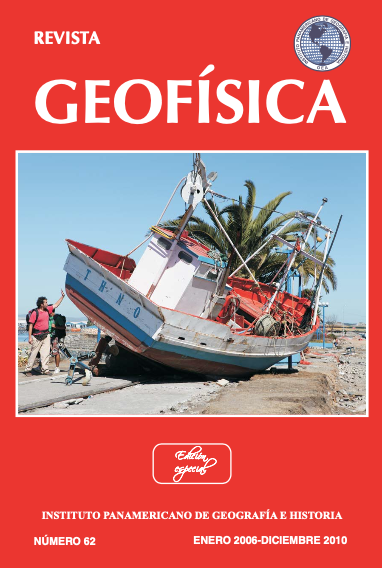Modelo estructural de la cuenca de Santiago, Chile y su relación con la hidrogeología
Main Article Content
Abstract
A gravity model of the Santiago Basin in Chile, controlled with data from 2,100 gravity stations measured between 1974 and 1990, indicated an irregular basement morphology composed of depressions and topgraphic highs, including depressions with depths greater than 500m. The most important are those observed in the sec- tors of Rinconada Lo Aguirre, Pudahuel, Santiago Oriente, the area between Cerro Chena and Isla de Maipo. These depressions are bounded by basement ridges with depths reaching between 50 and 150m approximately. The most important of these are associated with the lineament Cerro Trincado – Cerro Limpangue – Cerro de Lo Castro – Cerro Renca – Cerro Manquehue in the northern sector and Cerro Puntilla del Viento – Cerro Chena – Cerro Negro – Cerro Cordón Los Ratones in the south- ern sector.
Data processed from 1,915 exploration and exploitation boreholes for ground water, together with the analysis of the basement morphology show that the under- ground confined water volume reaches 31,000 million m2, considering a conserva- tive storage coefficient of S = 10%. In addition to the static level and the morphol- ogy of the basement, the thickness of the saturated aquifer was calculated. The major saturated thicknesses are found in the areas of major basement depressions determined in this study.
Downloads
Article Details
-
Abstract1762
-
PDF (Español)4331

